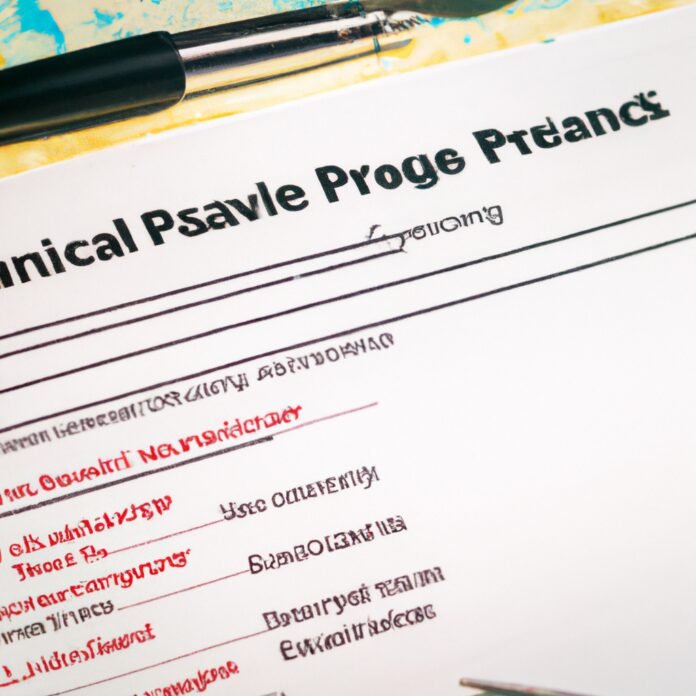Traveling is an exciting and fun way to explore the world – but planning a successful trip requires much more than just packing a bag and booking a ticket. Pre-trip planning includes thoughtful considerations such as making travel arrangements, budgeting for expenses, and, perhaps most importantly, securing travel insurance. Read on to learn when and how to purchase travel insurance for a safe and secure journey!
1. Road-Testing Travel Insurance – What you Need to Know
Travel insurance is designed to protect you financially in a range of emergency scenarios, from a luggage loss to medical expenses. But with all the different policies and products available, how do you know which one is right for you? Road-testing a travel insurance plan is your best bet for making sure you get the right coverage for your journey.
What To Consider
- What is your coverage limit? Make sure that the total cost of the policy is enough to cover any medical, hospitalisation, or other emergency expenses that you are likely to incur when travelling.
- Check for exclusions. Some policies can have limits on the types of circumstances they will cover or how long they can provide protection for. Look for a policy that covers everything you need.
- Look for add-ons. Many policies offer add-ons like coverage for additional activities, such as adventure sports or car rentals.
Comparing Quotes
Familiarise yourself with the different quotes to find out if the coverage is sufficient for your trip. This will help you determine which one offers the most value and which quotes should be discarded. Pay attention to the level of customer service offered and the company’s reputation when comparing quotes from multiple insurers.
Finalising Your Policy
When you’ve identified a policy that meets your needs, check the exclusions, costs, and limits before you make your purchase. Be sure to read the policy document carefully so you know exactly what’s covered and what’s not.
Finally, make sure you have sufficient coverage for any third-party liability you might incur while travelling abroad. Ask your insurance company for advice if you are unsure.
2. Making Sure You’re Covered – Pre-Trip Planning Tips
Pre-trip planning is essential for any vacation or business travel, and there are a few key things you should do to make sure you’re all set for your journey and covered in the event of any unexpected happenings.
Prepare Financially
Whether you’re going on a long, international trip or a short, weekend excursion, it’s important to budget carefully for your travel. Make sure to account for costs for flights, hotels, food, and activities. You should also purchase travel insurance, if necessary.
Plan an Itinerary
Organizing your time effectively will help ensure you get the most out of your trip. With an advance plan, you’ll know the sites and activities you want to explore and how you’re going to fit them into your time constraints. It’s also helpful to research restaurants and bars that will be nearby your accommodations so you can sample the local cuisine and craft beers.
Organize Your Documents and Payments
Before hitting the road, it’s important to make sure you have all of the necessary legal documents you’ll need. That means not only packing your passport, but also gathering any visas, credit cards, and travel insurance cards, and organizing them in a safe and secure place.
Gather Contact Info
In addition to being organized, it’s important to have the right contact info at hand before you depart. This includes the addresses and phone numbers of where you’ll happen to be staying, your flight details, and any potential contacts, like a hotel concierge.
Finally, Pack Wisely
Pack whatever items you think are necessary before you depart. Many people forget to bring the essentials, like their cell phone charger, and it’s not until it’s too late that you realize you’ve left something important behind.
- Underwear
- Toiletries
- Extra Phone Battery
- Adapters and Converters
- Medical Supplies, if needed
By taking the time to plan ahead, you can make the most out of your trip and ensure that all of your needs are met.
3. Purchasing the Right Policy – Evaluating Different Options
After getting a general sense of what insurance policies are available, you can start evaluating different coverage options that will best suit your needs. Remember that the right policy for you may not necessarily work for someone you know.
Gauge Your Risk Profile:
In order to evaluate effectively, it’s important to get a good sense of your own individual risk profile. Consider the following questions:
- What have been your past claims history and hospitalizations?
- Do you currently need family coverage or individual coverage?
- What is the age of each family member?
- Do you travel often outside your home country?
- What are the lowest premiums you can accept?
Ultimately, the answers of these questions should inform your selection and evaluation of different policy options.
Compare Benefits and Costs:
In addition to evaluating your risk profile, make sure to assess each policy’s benefits and cost. It’s important to compare not just the premiums, but also the coverage levels. Take note of various deductible amounts, out-of-pocket maxes, coinsurance percentages, and co-payment requirements. Be sure to review the details in the policy summary or certificate of coverage so you can compare apples-to-apples when making an informed decision.
Finish the Evaluation:
Once you know what benefits are included in each policy, check the network coverage. Review each policy’s network of providers to ensure enough medical professionals and facilities are included. Finally, read over the policy’s conditions, any restrictions, and the exclusions to make sure there are no surprises that will lower the value of your coverage.
With careful evaluation and comparison, you can choose a policy that provides the most amount of coverage at the most affordable cost.
4. Getting Insured – From Start to Finish
Getting insurance doesn’t have to be a chore—by the end you’ll have the peace-of-mind of knowing you’re covered and ready for whatever life throws at you. Let’s start at the beginning: getting insured from start to finish.
Step 1: Decide your budget
To begin looking for the right insurance option, you’ll first need to decide a budget for policies. Try to determine an amount you’re willing to spend each month, as this will help narrow down the best coverage options.
Step 2: Assess your needs
Your budget is in place—now it’s time to figure out your insurance needs in more detail. Make a list of your current living situation and other important factors such as your home, car, or lifestyle. Each of these will inform what kind of coverage is best for you.
Step 3: Relevant research
Once you know your budget and needs, it’s time to do some research. Start researching insurance products in the relevant areas to see what’s best for you. Shop around to get the best value for money, and make sure to read through the policy details thoroughly before committing.
Step 4: Speak to an insurance agent
Although researching online can be helpful, it’s also a good idea to speak to an insurance agent. This way, you can ask any questions and discuss the specific needs for your coverage. An agent will be able to provide more in-depth assistance and peace-of-mind that you’re making the right choice.
Step 5: Make a purchase
Once you’ve done your research and consulted with an agent, it’s finally time to make a purchase. Take out the insurance policy that is best for you and your budget. Don’t forget to start billing for the plan as soon as possible, so that you can enjoy the peace-of-mind knowing you’re covered.
No matter why or where you’re traveling, planning ahead is key— and that includes purchasing the right travel insurance. With the right information, you can make the most of your trip by being prepared for whatever life throws your way. So don’t be afraid to venture out— make sure your adventure remains up to par with the right travel insurance coverage.


